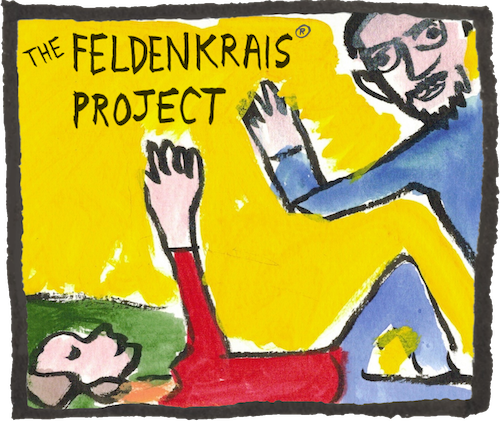Difficulty: Average Challenge
63m
Fundamentals of a Healthy Back (workshop lesson)
Back-lying, often knees bent, sometimes legs crossed, tilting. Clarifying our image of the "five curves" of the axial skeleton in action: the traditional three (lumbar, thoracic, and cervical spine), plus the sacrum/tailbone and the skull. Learning to sense functions and efforts through all five curves, including breathing. See the Context tab if you wish to go on to the next lesson in the workshop.
59m
Driving and Dynamic Sitting – Floor Practice
Mostly back-lying. Begins and ends in floor-seated. With explorations and benefits for all sitting situations, this lesson uses imagery of being in the driver's seat to promote lively, dynamic sitting and turning while negotiating the challenge of a typical "bucket" car seat. Postural expressions of rounding and arching are clarified, then used to improve the range, comfort, and awareness of whole body turning movements.
60m
The Hip Joints: Moving Proximal Around Distal
Back-lying, knees bent, feet standing, often one leg resting out to the side on a pillow. Learning to move the whole self (proximal) in relationship to a quietly resting limb (distal), often using pelvic clock movements. This reversal of the typical image we have of moving a limb creates a novel learning environment within the self, with benefits for the legs, hips, back, and our overall organization. Sitting on the floor at the beginning and end of the lesson is used to help identify some of the changes that take place.
62m
Rolling to Sitting, and Beyond
How do we get off the floor? This lesson explores the path from lying on your back to sitting up, and getting back down again, organizing the torso and limbs towards a smoother, simpler, more pleasurable transition. These movements are also powerful organizers for improving upright posture.
63m
Connecting Shoulders and Hips Part 2
Side-lying, further expanding the image of the shoulders and hips toward improving major postural and gait-related organizations of the torso. This lesson uses bending and thrusting the legs from the hips along with lengthening, arcing, and circling the arms. Prerequisite linked in lesson notes.
63m
Connecting Shoulders and Hips Part 1
Side-lying, improving functional relationships of the shoulders and hips through small and large movements. Constructing and improving your image of the "quadrilateral" of the torso while integrating the ribs, spine, neck, and head. Later, harnessing the suppleness of the quadrilateral to support reaching and circling the arm.
64m
More Precise Hips and Spine
Back-lying, knees bent, with a floor-seated frame at the beginning and end. Preparing for and clarifying an important primary relationship in the body: arching the spine while flexing the hips.
59m
Softening the Ribs
Lying on the back and sides, with some rolling transfers between, hands often on the lower ribs, learning to sense and soften the ribs, spine, and shoulder blades and integrate their movement with the pelvis and legs.
63m
Folding, Foundation, and Feet
Back-lying, knees bent, integrating bending of the ankles through the joints of the legs and into the pelvis and lower back, blending into a classic Feldenkrais lesson which draws the head, elbows, and knees toward each other in different combinations. Improve the folding and unfolding of the body through refining coordination of the flexor muscles, building awareness of the use of the ground (foundation), and lengthening the extensors.
61m
The Ultimate Self-Hug
Back-lying, learning to use the feet—and later, the arms in a self-hug position—to roll the body and reach to the sides. Setting up later lessons in this collection through developing suppleness of the torso and integration of the feet and eyes as they relate to smooth weight-shifting. "Walking" the hips and shoulders along the floor. Recorded in a series of classes about posture, balance, and grace.
